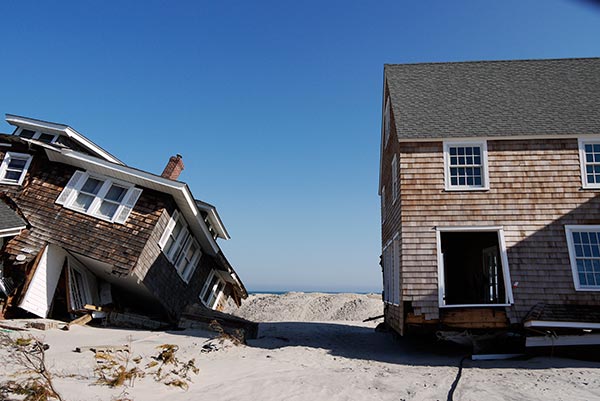
John D. Weaver, LCSW, BCD, ACSW is a founding partner of Eye of the Storm, a Nazareth, Penn., company that provides private mental health consultation and training services. The firm specializes in disaster mental health, crisis intervention, and risk management related training and support. He also works as a therapist for Concern.
Mr. Weaver, you are a social worker with many years of disaster relief experience. After Hurricane Sandy, you were a shelter manager with 88 people in your facility. What was that like?
This was an exciting extension of my work as a volunteer with the Red Cross Disaster Mental Health team. I’d been working the disaster from home as a virtual volunteer – a new role supporting disaster victims and relief workers who were sharing experiences via social media. My power went off, putting a stop to that. The next day, when power was still off, I drove over to our chapter to help out in any way I could. All of our management people were stressed and tired. Most needed some uninterrupted sleep and I’d already gotten mine. I told the shelter manager I’d cover for her and she took me up on the offer.
Did anything surprise you about the people in your shelter?
No. I’ve worked shelters many times and people tend to react to disaster stress in similar ways. We see a mix of emotional reactions including numbness, anger, fear, sadness, and grief. Folks are always thankful to be safe and worried about what will happen next.
What are the most common reactions?
Disaster stress reactions may include changes in appetite, poor sleep, anxiety, depression and possible crying spells, short temper, and questioning of faith. Children and teens have similar reactions and may regress a bit in their behavior (e.g., young ones may use baby talk, return to thumb sucking, or have some bed wetting). Older persons may show increased confusion and disorientation, a reaction to loss of familiar surroundings, routines and supports. All of this is normal in the short run following a major disaster.
How have people reacted to this disaster?
Most people are very resilient. In a moment, the disaster takes control of their lives, knocking them down but not out. Most people discover inner strength and rely upon one another for support to get back on their feet, retake control of their lives, and rebuild.
Disaster victims are forever changed by the events. They’ll never forget the sights, sounds, and smells they experienc. But most are not damaged by the events. In fact, years later most people think they are stronger, tougher, and wiser in the aftermath of disasters.
Could families bring their pets to your shelter?
Yes, we were working with a partner animal response agency that operated a shelter for pets in a building next to us. People would bring in their pets (and pet food), register them, be photographed, and receive an arm band with the pet’s ID number. This assured safety — only they could visit and eventually retrieve the pets — while avoiding problems with allergies and accidents that might happen if the pets were commingled with the people. Years ago, before we had this partnership, people often opted to stay home or in their own cars, rather than shelter without their pets.
How do you expect families who lost much of their property to deal with this event as they re-build?
Rebuilding after a disaster is like moving forward after you’ve lost a loved one who has died. It is a long, slow process that involves grieving the losses, rebuilding the home (or resettling to a different one), replacing lost things (photos, videos, furniture, books, art, holiday decorations, etc.), and reconnecting with life. I expect most people will be surprised that this process takes so long – typically takes two to seven years – and can involve new disasters (e.g., finding out their insurance coverage wasn’t what they thought it was and that outside help from charitable organizations and government will not make them whole). Nevertheless, I expect most will survive and, in time, come to thrive. For now, there will likely be more tears than laughter, but that will gradually change too. Most disaster survivors eventually can look back and brag about what they went through and overcame as they moved forward.





